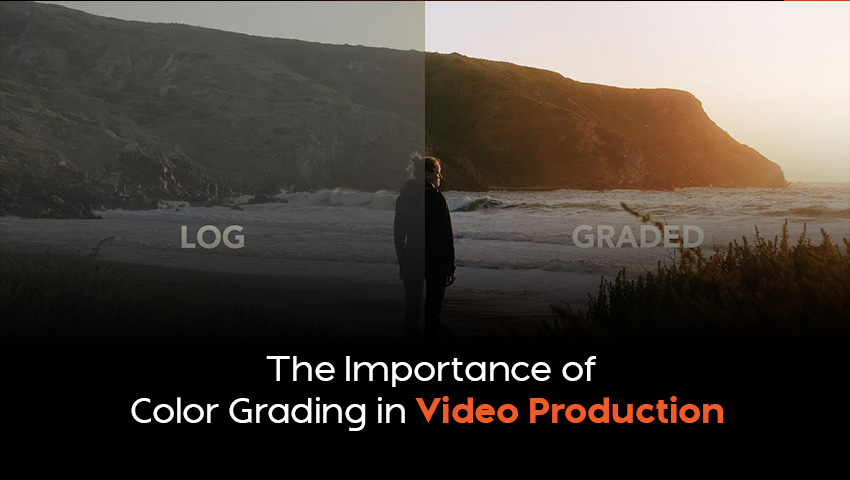
In the world of video production, visuals play a pivotal role in captivating audiences and telling stories. One key element that significantly enhances the visual appeal of any video is color grading. Whether it’s a short film, a commercial, or even a social media video, color grading can transform raw footage into a polished, professional-looking piece. But what exactly is color grading, and why is it so important? In this blog, we’ll explore the crucial role color grading plays in video production and why it should never be overlooked.
Color grading is the process of adjusting and enhancing the colors in video footage during post-production. It’s a technique used to create a consistent color palette, set a mood, and improve the overall visual quality of a video. Through color grading, filmmakers and video producers can craft a specific look that aligns with the story they’re telling or the message they want to convey. This is typically done using software like DaVinci Resolve, Adobe Premiere Pro, or Final Cut Pro.
Color grading plays a powerful role in visual storytelling. The use of specific color tones can evoke emotions, convey themes, and highlight key elements in a scene. For instance, warm tones (yellows, oranges, reds) often evoke feelings of warmth, happiness, or nostalgia, while cooler tones (blues, greens) can suggest melancholy, tension, or mystery. Directors and cinematographers use color grading to subtly influence how audiences feel while watching a video, enhancing the overall impact of the story.
Have you ever watched a horror movie where the dark, eerie colors made you feel tense or a romance film where warm, golden hues made everything feel dreamlike? That’s the magic of color grading. The right color palette can establish the mood of a scene instantly. For example, desaturated colors and darker shadows can make a scene feel gritty and serious, while bright, vibrant colors can create a cheerful or fantastical atmosphere. Without color grading, the video may lack the emotional depth that draws viewers into the world being portrayed.
In any video, maintaining a consistent look and feel across different scenes is essential. Sometimes footage shot in various locations or lighting conditions can look disjointed when pieced together. Color grading allows for the smoothing out of inconsistencies, ensuring that the entire video has a uniform appearance. This is particularly important in professional settings, where fluctuating colors can distract viewers and take away from the overall quality of the video.
Color grading can also be used to draw attention to specific details or characters within a scene. By adjusting the brightness, contrast, or saturation of certain areas, a colorist can subtly guide the viewer’s eye to the most important parts of the frame. This technique is often employed in advertising and promotional videos, where the goal is to focus on a product or key message.
Beyond storytelling and mood, color grading simply makes a video look more visually appealing. Raw footage straight from the camera can often appear flat or dull due to lighting limitations or camera settings. Through color grading, video editors can enhance the contrast, saturation, and overall vibrancy of the footage, turning an ordinary shot into something that looks cinematic and high-quality. Whether it’s enhancing skin tones or bringing out the rich hues in a landscape, color grading elevates the production value of any video project.
Many filmmakers and content creators have a distinct visual style that sets them apart from others. Color grading allows for the creation of a unique aesthetic that can become a signature of a brand or creator. Think of directors like Wes Anderson or Christopher Nolan, whose films have instantly recognizable color palettes. Whether you're building a brand identity or developing a personal style, color grading is a key tool to achieve that memorable look.
In addition to enhancing the visual appeal, color grading is also essential for correcting imperfections in raw footage. Factors like improper white balance, inconsistent lighting, or exposure issues can make footage look unprofessional. With color grading, these issues can be corrected, ensuring that the final video appears polished and balanced. This step is crucial, especially when working with multiple cameras or shooting under unpredictable lighting conditions.
Color grading is much more than just a final touch in video production—it’s an essential part of the creative process that influences how a video is perceived. From establishing mood and enhancing storytelling to ensuring visual consistency and correcting imperfections, color grading brings a video to life in ways that raw footage simply can’t. If you’re aiming to create high-quality, visually captivating content, color grading is a must. By giving your footage that professional finish, you can take your video production to the next level and leave a lasting impression on your audience.
At Ithmar Media, we believe that every detail matters, including the perfect color grade. Whether you need video production, post-production, or complete branding services, we are here to help. Contact us today to elevate your visual storytelling and create videos that stand out!
In nature, light creates the color. In the picture, color creates the light. -Hans Hofmann